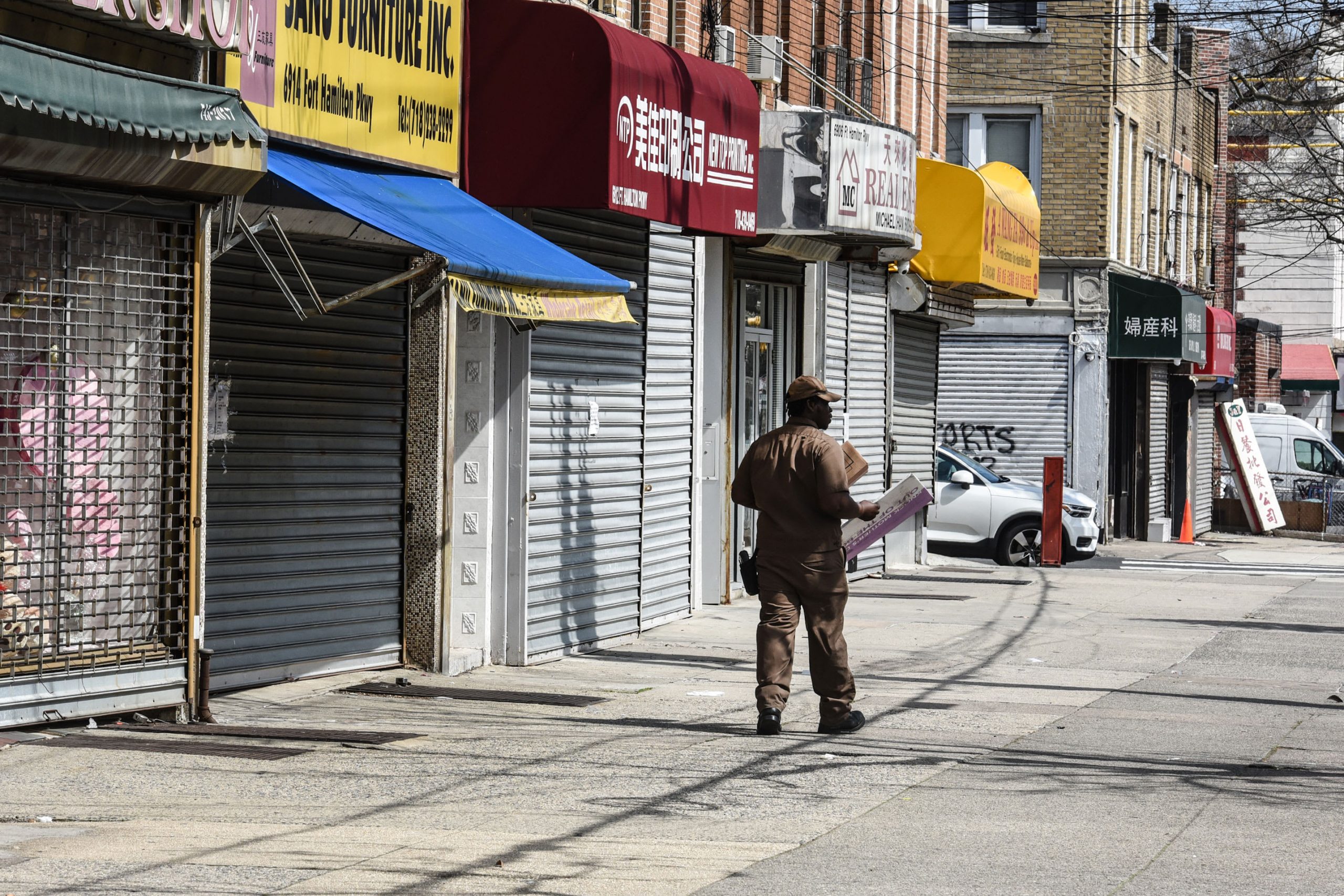
A worker for United Parcel Service Inc. (UPS) makes deliveries on a street with closed stores in the Borough Park neighborhood in the Brooklyn, New York, April 7, 2020.
Stephanie Keith | Bloomberg via Getty Images
Black-owned business have suffered disproportionately during the coronavirus pandemic and should be the target of future economic recovery efforts, according to an analysis the Federal Reserve released Tuesday.
Researchers at the central bank’s New York district further found that Covid-19 cases are concentrated in areas that are more predominantly populated by Blacks, causing a further hit to those businesses.
The issue is compounded by lack of access to adequate funding, including the rescue loans provided through the Paycheck Protection Program. Just 20% of PPP loans went to areas that had the highest concentration of Black-owned businesses, wrote Fed anlaysts Claire Kramer Mills and Jessica Battisto.
“Given the high geographic concentration of firm activity and the Black population in general, business disruptions in these particular places can have outsized effects on African American well-being at large,” they wrote.
The paper comes as the White House and congressional Democrats are trying to work out the details on additional relief efforts from the unprecedented economic and employment hit during the pandemic. Extended unemployment benefits expired at the end of the July and the extent to which they will be continued is a main sticking point in the talks.
However, the analysts say additional funding also should focus on correcting racial disparities.
“To have the greatest impact, the next round of COVID-19 relief should be more targeted geographically to focus on the hardest hit areas and communities that lack critical infrastructure (hospitals, banks) to ameliorate the gaps,” they said.
The problem showed in the distribution of PPP loans.
For instance, just 7% of businesses in the Bronx, New York, received loans; 11.3% of businesses in Queens were recipients, while the number was 11.6% in Wayne County, Michigan and 12.2% in Prince George’s County, Maryland. All areas are among the highest nationally in concentrations of Black residents and businesses.
“Loans from the first round of PPP were not correlated with the number of COVID-19 cases in a state,” the Fed paper said. “Instead, more likely reasons for businesses receiving these loans included having a prior banking relationship as well as community banks’ market share.”
Having a relationship with banks was another significant issue: More than three times the amount of Black employer firms (37.9%) said they didn’t apply for financing for fear of being turned down than did White-owned firms.
“The racial disparities in bank relationships prior to COVID-19 detailed here raise structural questions about the presence of banks and access to credit in communities of color, questions that have heightened significance when banks are relied on to administer federal, taxpayer-supported relief programs, as is the case with PPP,” the report said.




